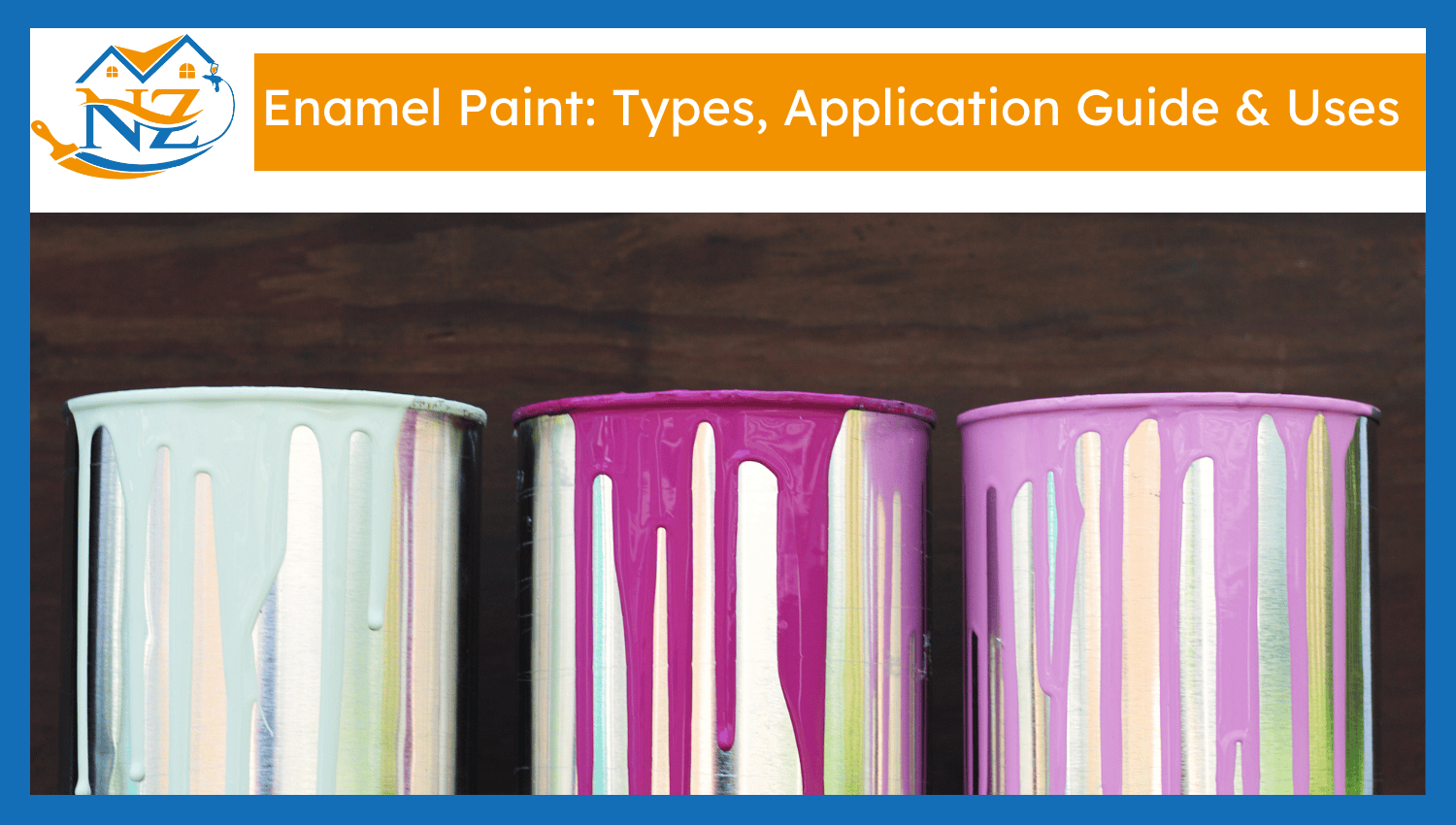

Enamel paint is a hard, smooth, and glossy paint with a durable finish. Enamelwork gained popularity during the Byzantine Empire with cloisonne and champlevé techniques. It is composed of resin pigments and a solvent for smooth application. It contains silicone resins, which resist heat. Its oil-based nature makes it water-resistant and ideal for humid regions. Unlike acrylic and latex, which are water-based with low odor, enamel paint has a strong odor with less flexibility.
Here are the key properties of Enamel paint:
| Property | Description |
|---|---|
| Durability | Highly resistant to wear, chipping, cracking, and fading. |
| Finish | Available in glossy, semi-gloss, satin, and matte finishes. |
| Water Resistance | Good resistance to moisture and water after full curing. |
| Heat Resistance | Withstands moderately high temperatures; used on stoves, radiators, etc. |
| Chemical Resistance | Resists mild acids, alkalis, and household chemicals. |
| Surface Adhesion | Adheres well to a variety of surfaces including metal, wood, and walls. |
| Color Retention | Maintains color over time without significant fading. |
| Drying Time | Slower than acrylics; can take several hours to fully dry (some types faster). |
| Application | Can be applied by brush, roller, or spray. |
| Hardness | Dries to a hard, often glossy surface. |
| Scratch Resistance | Good resistance to abrasion and minor scratches. |
| Toxicity | Oil-based enamels may emit VOCs; proper ventilation is required. |
| Cleanup | Oil-based: Requires mineral spirits; Water-based: Soap and water. |
Here are the five common types of enamel paint:
Oil-based enamel paint contains linseed oil and organic solvents. It provides a hard finish, making it resistant to scratches and wear. Oil-based enamel paint requires a solvent (thinner) for cleanup. It lasts for up to 15 years when properly applied.
Water-based enamel paint is composed of a resin binder, pigment, water, and various additives. It contains thickeners and defoamers to control the viscosity and foaming in paint. Latex lasts for 5 to 10 years, depending on its exposure to UV sunlight.
Acrylic enamel paint is a blend of oil and water-based paint. It is hard (enamel) and dries quickly (acrylic). Unlike enamel, this hybrid paint is flexible and easy to clean up. Its formulations don’t fade and corrode quickly.
Alkyd enamel is a modified form of oil-based enamel paints. It is made up of a synthetic polymer similar to natural resins. It contains siccatives, which accelerate drying by oxidation. Anti-settling agents in alkyd paints prevent pigment from settling to the bottom.
Spray enamel comes in aerosol form. It is quick, easy, and provides uniform coverage without brush strokes. Its anti-sagging properties prevent paint from dripping and running. It is suitable for a smooth finish indoors and outdoors.
Here are the common uses of enamel paint for indoor and outdoor applications:
Here are the pros and cons of using an enamel paint:
Here are the best enamel paint color options:
| Color | Visual Appeal | Common Applications |
|---|---|---|
| Gloss White | Clean, bright, reflective | Kitchens, appliances, trims, doors |
| Jet Black | Bold, modern, dramatic | Furniture, railings, accent walls |
| Navy Blue | Deep, classic, elegant | Cabinets, metal gates, exterior doors |
| Charcoal Gray | Sleek, contemporary, neutral | Industrial surfaces, outdoor furniture |
| Cream/Beige | Soft, warm, subtle | Walls, vintage furniture, interiors |
| Forest Green | Earthy, rich, timeless | Exterior trims, furniture, garden features |
| Burgundy | Luxurious, bold, deep-toned | Furniture, accents, heritage buildings |
| Terracotta | Warm, rustic, natural | Patio furniture, walls, clay pots |
| Bright Red | Vibrant, energetic, eye-catching | Decorative elements, vehicles, toolboxes |
| Royal Blue | Vivid, regal, versatile | Doors, frames, machinery |
| Sunshine Yellow | Cheerful, vibrant, high visibility | Toys, children’s furniture, signages |
| Chocolate Brown | Warm, grounding, natural | Wood surfaces, trims, fences |
| Silver/Gunmetal | Sleek, metallic, modern | Appliances, hardware, automotive parts |
Here is the step-by-step guide to applying enamel paint:
Compatibility is the test to check the reaction of enamel and other paints. Apply enamel over the latex after sanding the surface. Likewise, remove the enamel to paint with latex for proper adhesion and lasting results.
Don’t mix the enamel with latex paint. They have different chemical properties and application methods. Doing so leads to peeling paint and rough finishing. Apply a clear coat to protect the paint within 8 hours. Sealing enamel paint is also applied to prevent rust and corrosion.
Here are the removal and cleaning methods for enamel paint:
Yes, enamel paints are waterproof due to their oil-based nature.
It takes 8 to 24 hours for an enamel paint to dry and 7 days to completely cure. Its strong odor fades within 72 hours.
Yes, you can use it on plastic, metal, and glass to design artifacts.
Yes, it contains high VOC, which affects our air quality compared to acrylic and latex.
Yes, primer removes the imperfections and allows proper adhesion.